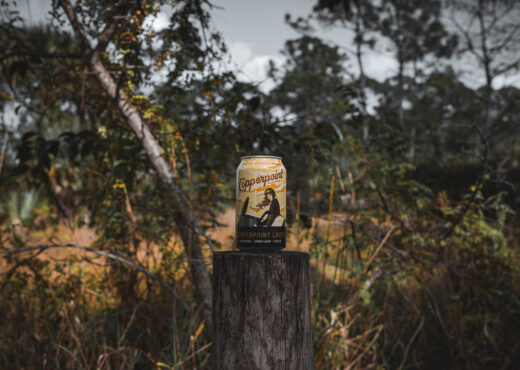I know it might be hard for many to believe but Florida can be a strange and — often times — wacky state to follow in logic. One of these particular instances is understanding the two different types of licenses that the state offers to those wishing to brew beer commercially. “Why two?” you might ask, well these two different licenses come with different restrictions on the license holder about a number of things, including but not limited to, the amount of beer the brewer can make per year along with the way the beer is served from their premise.
The two different license types are CMB and CMBP. Think of the CMB as a commercial/production brewery while the CMBP as a brewpub. I’ll get more into the specifics of those in just a moment.
Why am I am I writing about these besides having some spare time on my hands? Having seen some CMBP holders having bottle releases in the past number of months got me thinking, “Do they even know that they can’t do that or are they willfully disobeying the restrictions?” Wanting to see the best in people I am hoping for the earlier of those two options and start doing some research.
Unless you’re a lawyer, reading and understanding the restrictions of certain license types can be maddening. Legal jargon is boring and worded in such a specific way that it sometimes leaves holes in your comprehension of the statement that only leads to more questions. Luckily my experience coupled with getting some help from the wonderful Executive Director of the Florida Brewers Guild, Sean Nordquist, allowed me to put together some — hopefully — easy to understand outlines of the two different licenses and what restrictions they have.
Are you good and confused? Great, let’s get to this.
Manufacturer/Brewer of Malt Beverages (CMB)
The CMB license is by far the most common license obtained by brewers in the state of Florida. Do you plan to distribute? You should be a CMB. Do you plan to do growlers, canning or bottling? You should be a CMB.
Additionally with a CMB you can maintain a taproom in addition which just requires you to get the appropriate license for that (2COP at minimum).
There is a $3000 per year fee for a CMB license and yes that is pretty steep but it pretty much gives you the ability to do almost all things you might want to do with your brewery.
Manufacturer of Malt Beverages in Vendor Premises (CMBP)
This license type is technically an add on to existing vendor licenses like the 2COP or 4COP, these are your typical bar licenses for on-premise consumption of alcohol. This can allow an existing bar or restaurant to open a brewery on their premise, brew beer and sell it for consumption on-premise. You might be thinking that this is no different so far to the CMB because they can do that. Well here comes the differences.
Firstly is the cap on production size. A CMBP holder may not produce more than 10,000 kegs per year. This number was made by the state and their outlines state that a keg is equal to 15.5 gallons, or a half barrel. So in essence your cap per year as a CMBP is 5000 barrels. This is quite a lofty goal for some small breweries and seems like something that they can easily stay under.
Secondly you can not distribute your beer whatsoever. That means your friend’s bar down the street that wants to support you by having you on draft is out of luck.
On top of the distribution restriction, a CMBP may only sell it’s brewed beer for on-premise consumption. This means no growlers or crowlers to go, no bottle or can releases (unless they are consumed on-premise) and no kegs to go for a customer’s home consumption. Pretty much if you want a customer to leave your location with your beer in their hands a CMBP does not allow for this. Exact wording can be found in statute 561.221(2).
The CMBP license is a mere $500 per year, a very attractive number in comparison to the CMB’s $3000, so it might entice some to take that course instead of the full production.
Which is Right for You?
When all boils down to it, this decision is up to you and how you see your business. When going through the list of CMBP holders I see a number of brewpubs that have been doing quite well for themselves over the years and that seems to be the exact direction they want to be in. However with the change in the industry towards creating as many options for consumers to take beer home withthem this seems to leave the CMBP as a no can do option if you have your heart set on doing growlers or special bottle/can releases.
While the old neighborhood brewpub serving good food and house made beers has a place in many other states –where there are less restrictions on the production, distribution and take away aspects — Florida again seems to be behind on the times. In Portland, as I mentioned in a past post, there doesn’t seem to be many breweries that aren’t brewpubs. There they can make food, brew beer, sell it to go and distribute all out of their single spot. Can Florida get there too? Maybe, but as we saw with the growler battles from a few years ago it’s no easy task with a state so deep in the pockets of big beer. Judging by the relatively small amount of CMBP holders (As of this posting there are currently only 52 holders of the CMBP license while there are 232 of the CMB) that it’s not likely going to become an issue that will be coming across the state capital’s steps anytime soon.
While the CMBP is nice to have for those that want to do the true brewpub experience of food and beer in house if any part of your plan is to sell beer to go, the CMB is the investment you must make. That $3k is probably a lot less than if Tallahassee comes knocking at your door.



1 Comment
Thankyou. Extremely helpful. Was planning to do a pub, but now I’m going to invest in the comb license. Live in a tourist town. Will be first beer brewed here.
July 6, 2020 at 10:09 am